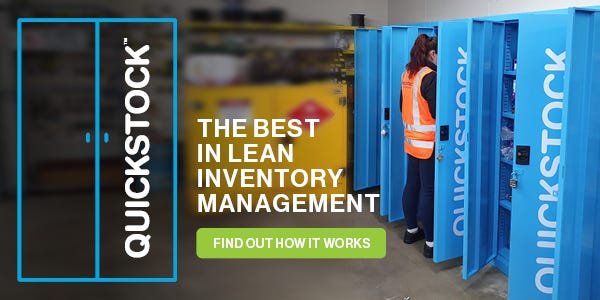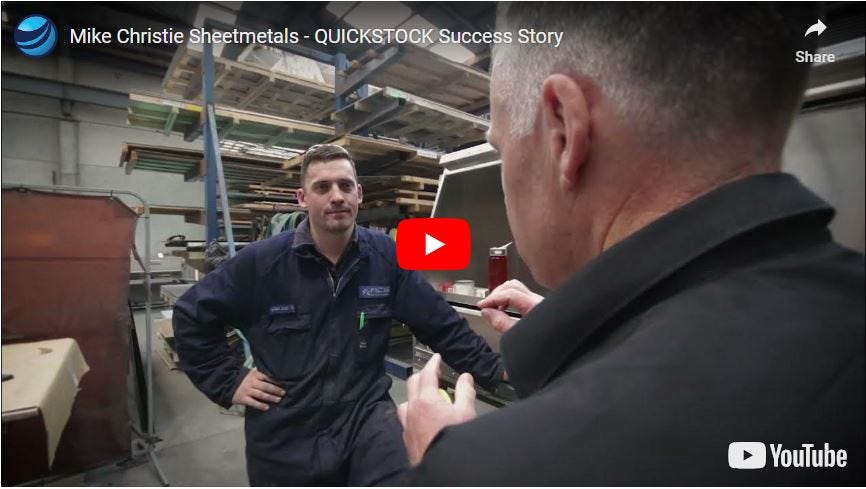How To Improve Cashflow Through Stock Management
Cashflow is king when it comes to business stability and growth, and a lot of this depends on inventory management. Here’s some strategies for improving cashflow through stock management…


1. Do some analysis!
If you don’t know where you stand, how can you improve? A lot of businesses think they’ve got this in the bag because they keep a thorough record of their inventory, however there’s more you might like to look into to maximise efficiency:
Supply & demand
Do you adjust your inventory to match production demand? An analysis of past trends can indicate when less stock may be needed to free up cash.
Wastage
Do you account for how much of your consumables are being wasted? Are they being used to their full capacity before being discarded? This could be an area where savings could be made.
Time & ordering efficiency
Have you ever analysed how efficient your ordering processes are? Most companies don’t realise how much resource is spent on inefficient ordering processes. Take the time to analyse the following points:
- How many consumable orders do you place per month?
- How long does it take to work out what you need and place an order
- How much time is spent chasing up orders?
- How much admin time is spent processing order invoices?
- How long does it take to check and pack away the inwards goods?
- Do you ever experience consumable stock outs?
- What is the downtime cost of a stockout?
- What is the cost of time taken to drive to a shop to pick up stock?
2. Make smart buying decisions
This might sound obvious, but without the above analysis you might not be aware of just how much cash is tied up, or spent on expenses that could be avoided just by making small adjustments to the way you operate. Here are some examples:
Product Life
Are all your consumables being used to their maximum capacity? Often as a business grows, and new staff come on board, businesses find not all staff have the same training on product usage. In some cases this could mean consumables are being replaced before they reach the end of their life, which can add up to a lot of extra money being spent on additional product.
Shipping/Collection Costs
How often do you place orders? While $6-$10 shipping doesn’t seem like much, it can add up. The cost savings for ordering monthly rather than weekly could be $240-$400 a year just for your regular orders with one supplier – and that doesn’t include any emergency orders placed if product runs out or is forgotten.
On the other side, the cost of trips to the shop can be even more than shipping as it involves lost productive time. Even a half hour round trip is time that could have been spent on production. Then of course there are travel costs. The more frequent your orders, the more these trips will be costing - so you want to make sure they are necessary trips.
Storage Costs
How much are your consumables really costing you? On the one hand, bulk buying consumables you’re always going to need can greatly reduce their cost price, but many businesses don’t have the room to store large quantities, or it becomes a cost in terms of staff needing to travel long distances to a store room to retrieve what they need. On the other hand, lean practices can be great for freeing up cashflow and only stocking what you need – however then you can miss out on quantity discounts. Your third option would be a supplier managed inventory solution. This can be the best of both worlds, where your supplier ensures you have a regular supply of stock stored on the premises, but you only pay for what is used. In many cases this not only frees up cashflow, but reduces the need for large storage areas, eliminates shipping costs, and decreases your time in managing inventory.
3. Plan to succeed
That old adage – ‘failing to plan is planning to fail’ can often ring true when it comes to stock management and cashflow. If you’ve recently analysed the different areas of your operations around inventory, it’s quite possible some areas have been highlighted where you can quite easily make some radical improvements just by implementing some plans and procedures and sticking to them. Here are a few operational procedures that can be implemented which can lead to increased cashflow when it comes to inventory management:
Implement some standard operating procedures when it comes to regular stock ordering
Needless to say, having a process can make a huge difference when it comes to reducing unnecessary and costly orders. Something as simple as setting aside an hour on Mondays to do ALL the ordering can end up saving on time and costs. This can mean less interruptions, so less chance of mistakes, and a decrease in the number of unexpected orders getting placed each week.
For more information on managing stock levels and re-ordering processes, check out these blogs:
- 5 Best Practices For Consumable Stock Management
- How To Implement Kanban In Your Metal Engineering Workshop
Make ordering easy
Take the time to set up your ordering processes so they are quick and easy. This will reduce stress, time, and the likelihood of ordering the wrong thing. Possible ways to make ordering easier could be:
- If you order online, see if the website has a favourites section (Euromarc’s is called QuickOrder) where you can load all your frequently ordered products so you don’t need to search the website each time, and can easily see your prices and quantity discounts.
- Use your accounting system to report on which consumables need to be ordered.
- Get someone else to do it – another option is to offset the job of managing stock onto your supplier by moving to a supplier management inventory situation.
Analyse regularly
Set a plan for checking over everything on a regular basis. Depending on your business, this could be quarterly, bi-annually or annually. During this time check on things such as:
- Have a look at the used consumables being thrown out – are they being used to full capacity? If not, talk to your supplier and/or staff on the best way to make full use of the product.
- How do your stock levels compare to production? Check to make sure the balance is right so you are not holding too much stock, but that you are also not getting stockouts which can cause production delays and additional orders placed.
- Consumable quality – are the consumables you’re using providing you with value? Make sure the product you are using is enhancing your production, and not causing any ongoing issues.
 Need assistance?
Need assistance?







